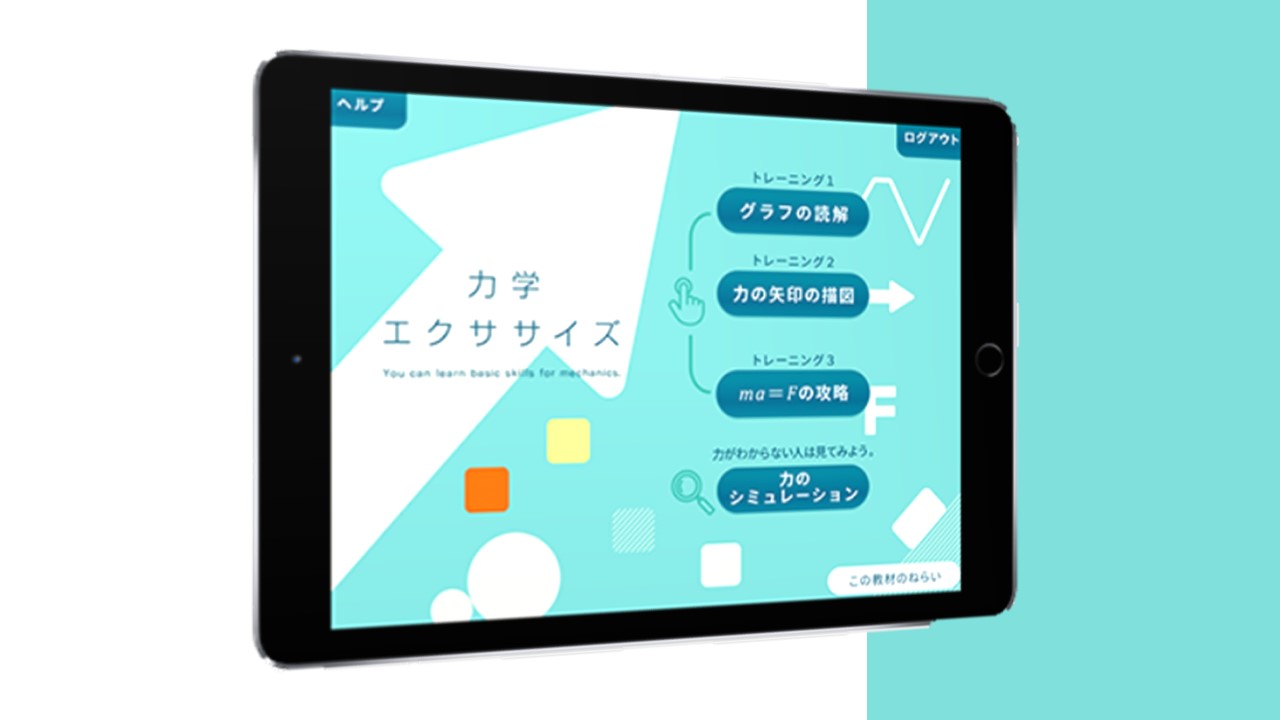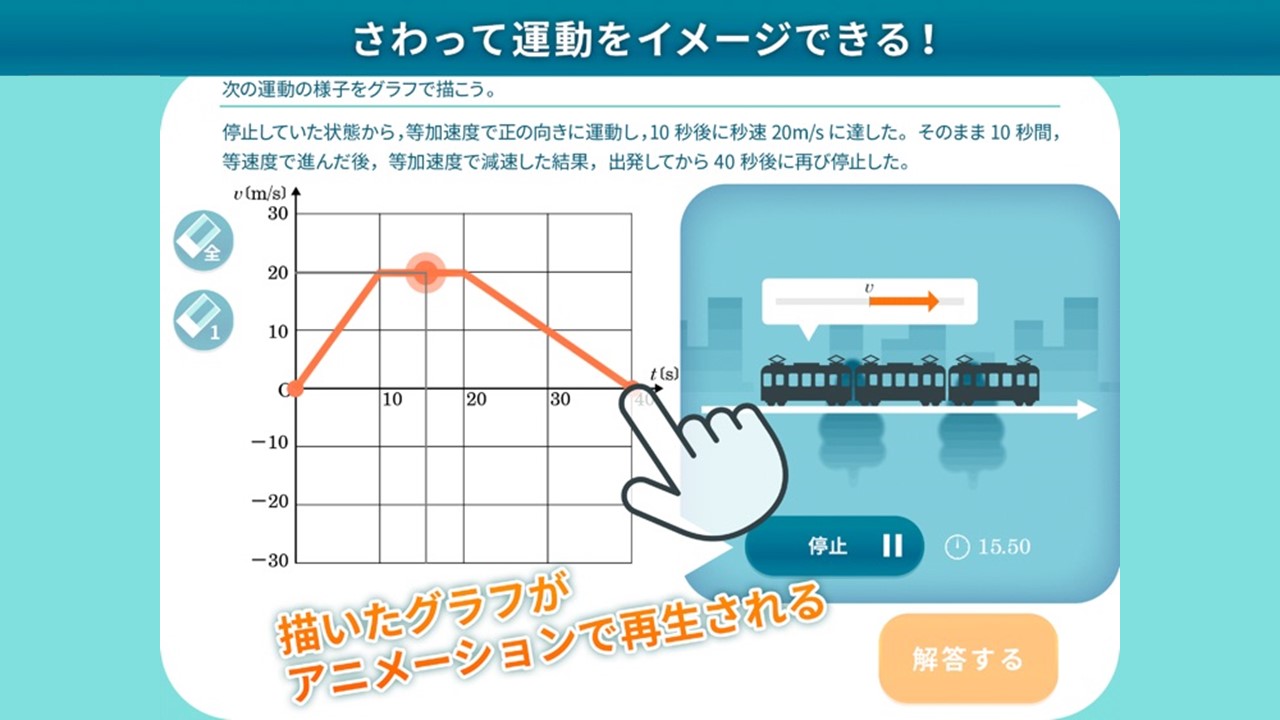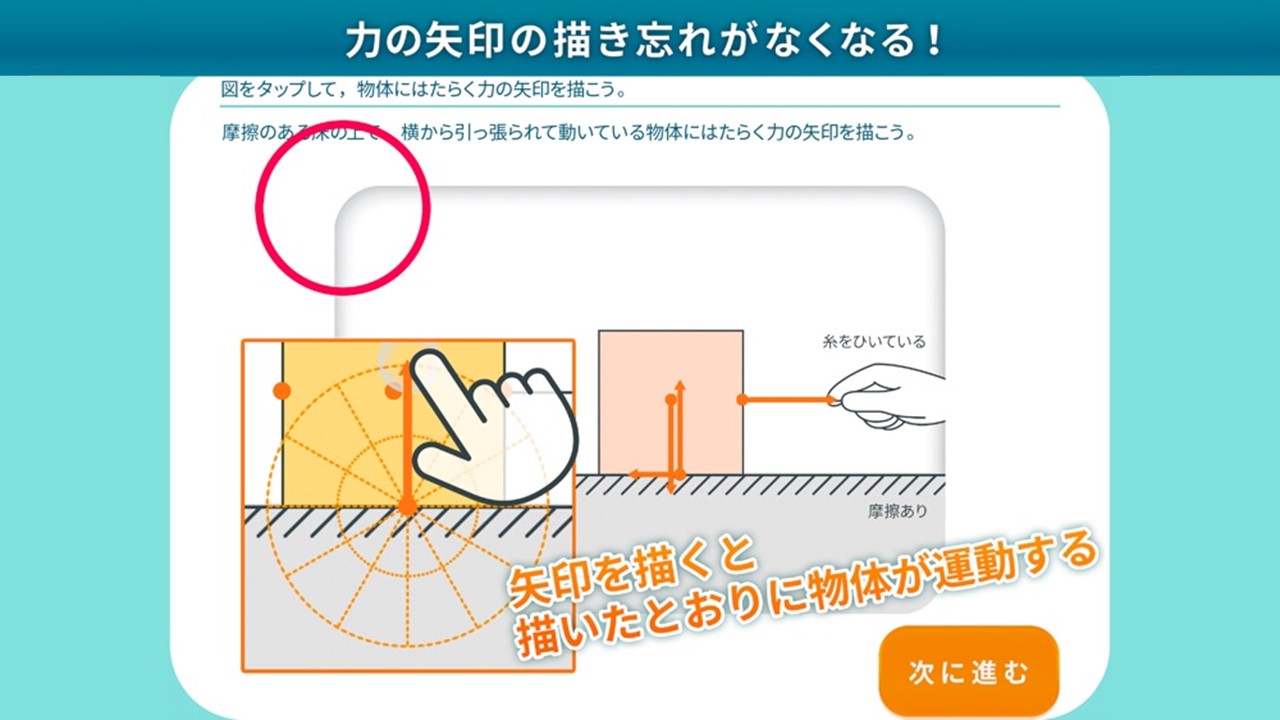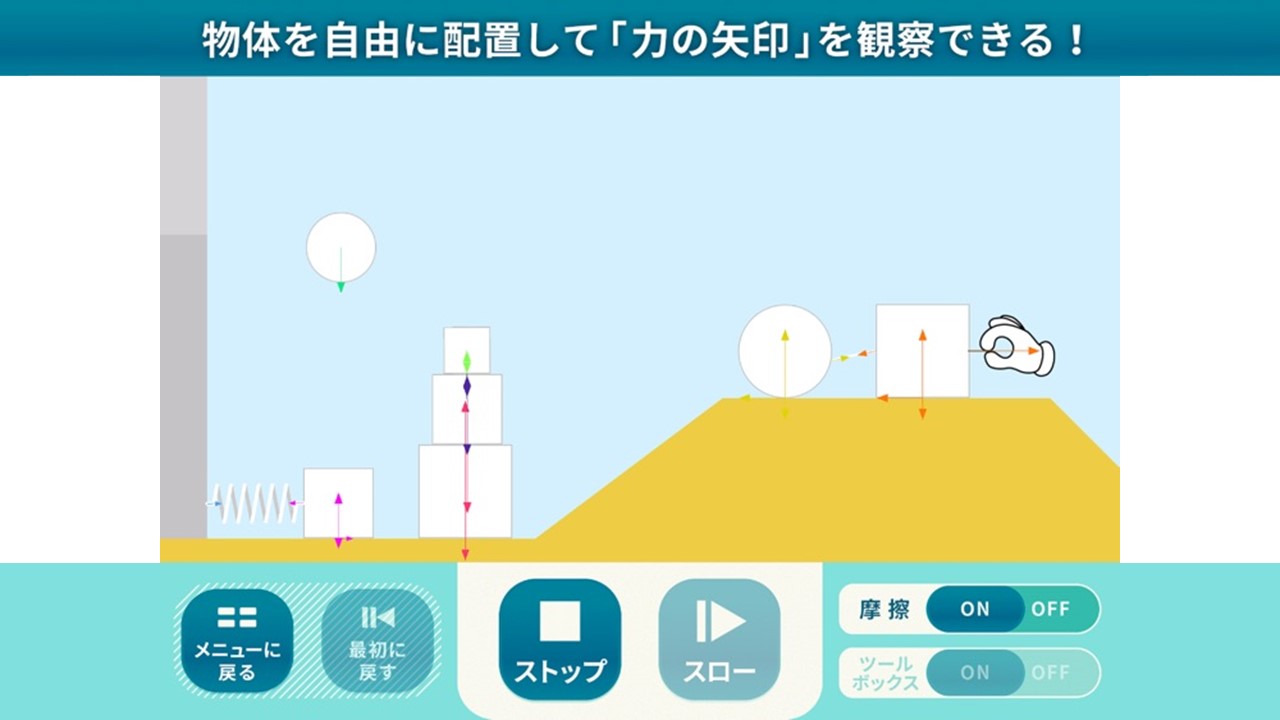
In Mechanics Learning Exercise, students can learn how to use their brains in a way that is unique to mechanics without having to sit at a desk. In each section, such as "Reading Graphs" and "Drawing Force Arrows," you can practice by drawing graphs and arrows in an instinctive way.
This was the first application I was in charge of, and it has received high praise from users who have used it. I created the planning and requirement specifications, and commissioned an outside vendor to create it.

My first task was to analyze the user's problem.
High school physics is conceptual, and many high school students struggle to understand the first unit, Mechanics. When we broke down their stumbling blocks, we realized that they needed to experience thinking about phenomena by connecting them to graphs and graphical representations. We decided to create experiences that could not be done with pen and paper, but only with an app.
Although the trigger was company policy, I thought there were many advantages to learning mechanics on a tablet. This is because it is important to be able to imagine "motion" in learning mechanics, and that can be expressed because it is an app rather than paper. Specifically, we focused on two keys.


Even though I had no experience in app development, the fact that I was able to create an app and have users be happy with it gave me confidence. Even though I was an amateur developer, I was the first to understand the challenges faced by users who were first-time physics students. In other words, I came to believe that if I had a solid UX for solving problems, I could create a product by actively learning and relying on others appropriately, even if I lacked technology and skills. This experience supports my challenging mindset.